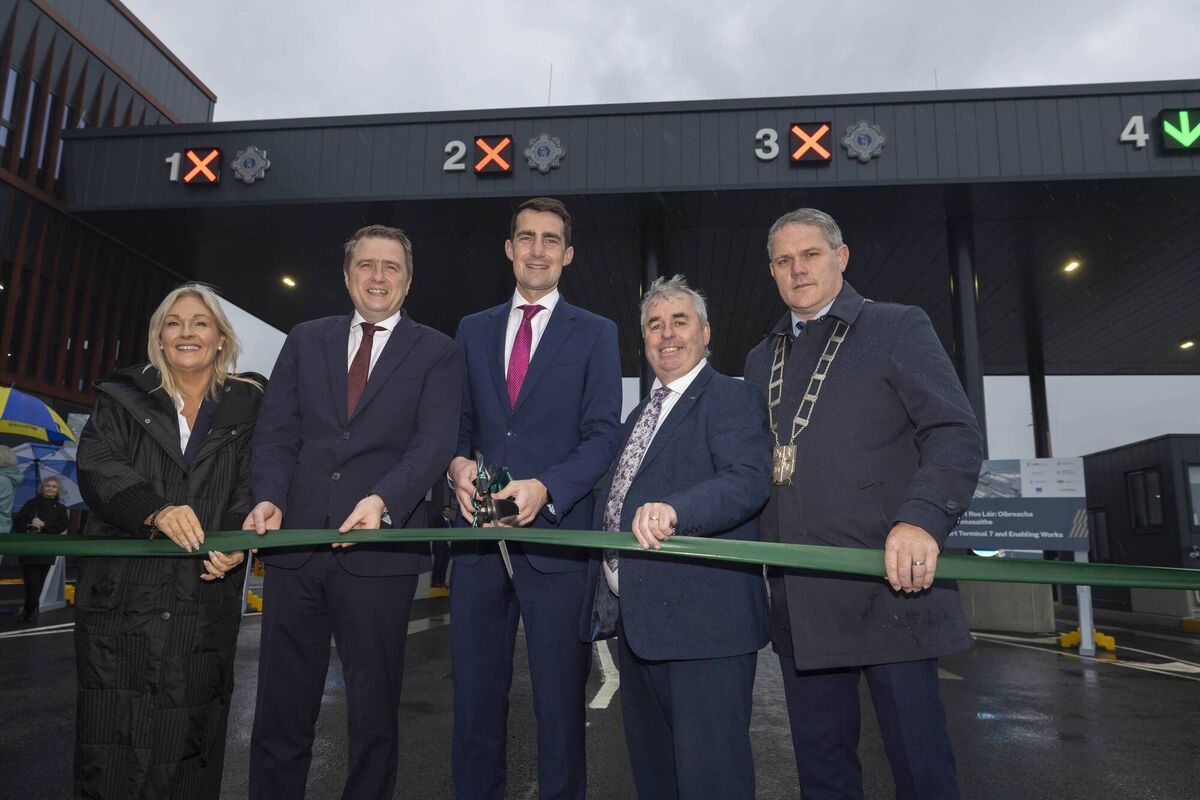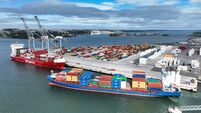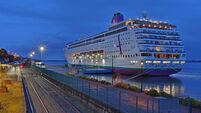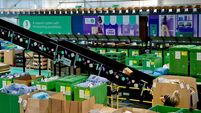Maritime economy: Big moves on horizon for Rosslare Europort
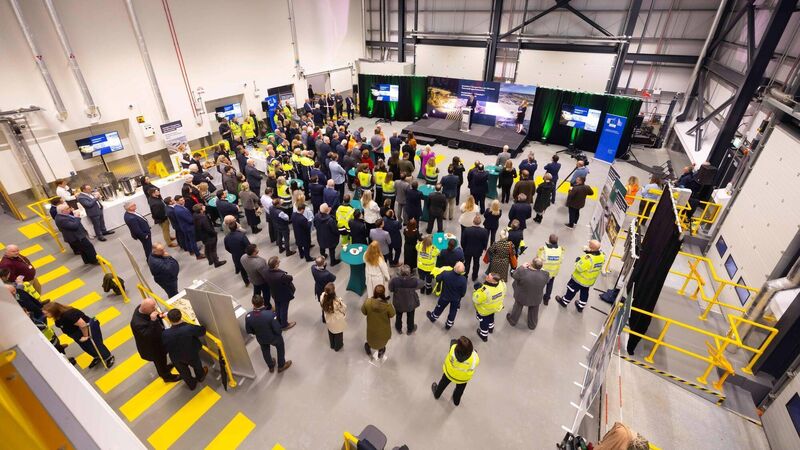
Workers and dignitaries at the official opening of the new Rosslare Europort Terminal 7 complex.
It has been a whirlwind couple of weeks at Rosslare Europort, in Co Wexford, as the latest step in the redevelopment of the port was launched.
On Friday, November 7, the Minister for Public Expenditure, Infrastructure, Public Service Reform and Digitalisation Jack Chambers and Minister of State with responsibility for the Office of Public Works, Kevin Moran, officially opened the new customs and border control complex at Rosslare Europort.
Covering passengers, freight, live animals, and food, the new complex is a mammoth border operation. According to the Central Statistics Office, between arrivals and departures, Rosslare welcomed 243,302 passenger cars, motorcycles, and accompanying trailers/caravans in 2024, and a further 2,425 buses. Some 218,200 freight vehicles and trailers passed through during the year.
Facilities to cater for this demand were no longer fit for purpose. The old border inspection centre at Kilrane, 1.2kms outside of the port, has now ceased operations.
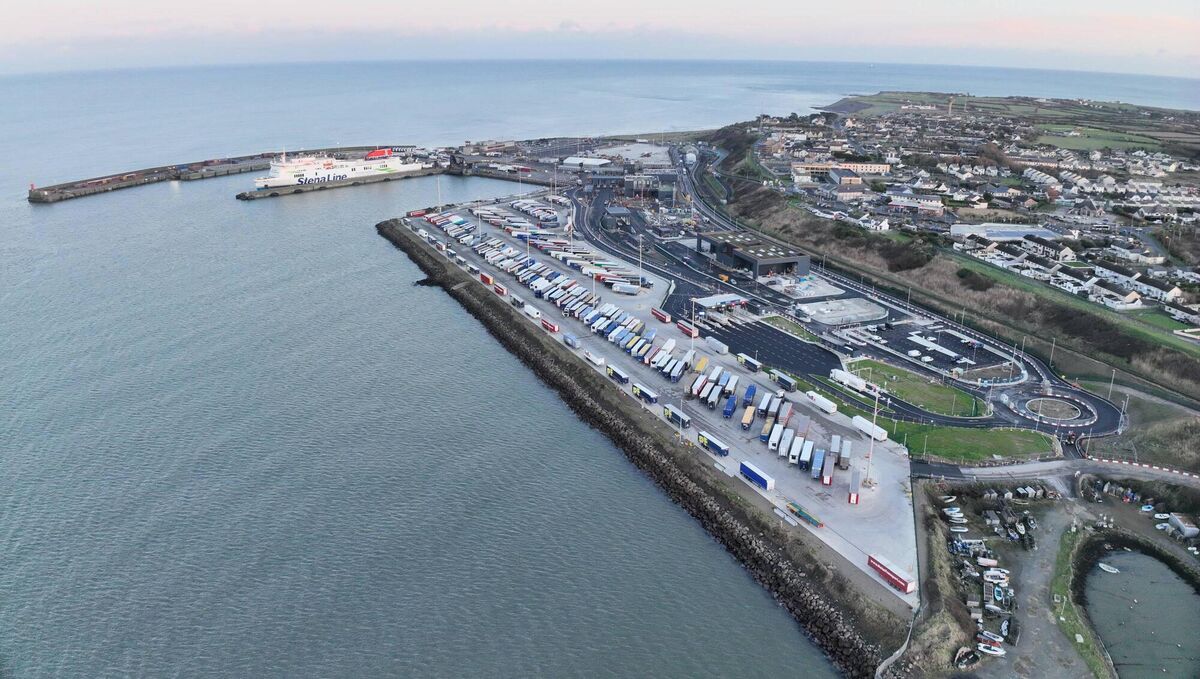
In its place is the Terminal 7 project at Rosslare Europort, a massive capital infrastructure undertaking, with an investment of €230m. In recent years, Rosslare has become increasingly important as a gateway to the continent, allowing importers and exporters to avoid bureaucratic hurdles and ‘land bridges’ travelling to the continent via Britain, in the wake of Brexit.
Back in July, Minister of State at the Dept of Transport Sean Canney noted that roll-on/roll-off traffic on Rosslare–EU routes “has grown at a faster pace than at any other port, with trade with continental Europe having increased by 398% over the past three years”.
The T7 project sees the construction of 34 new buildings to replace temporary structures which have operated over the past four years, when temporary infrastructure and processing facilities were put in place to deal with a rapidly changing and uncertain Brexit environment.
Funding for the project comes mainly from the Brexit Adjustment Reserve (BAR), which was set up by the EU to mitigate some of the economic and social impact of Brexit.
The latest facility which opened on Friday handles post-Brexit checks on goods coming into the country from outside the EU.
“This essential new infrastructure guarantees Ireland stable and continued access through Rosslare to the EU single market and its population of 450m people,” said Mr Chambers. “I want to pay tribute to the work of OPW and the contractor for the project, John Paul Construction, in undertaking such a complex project and the success in delivering this on time and on budget.”
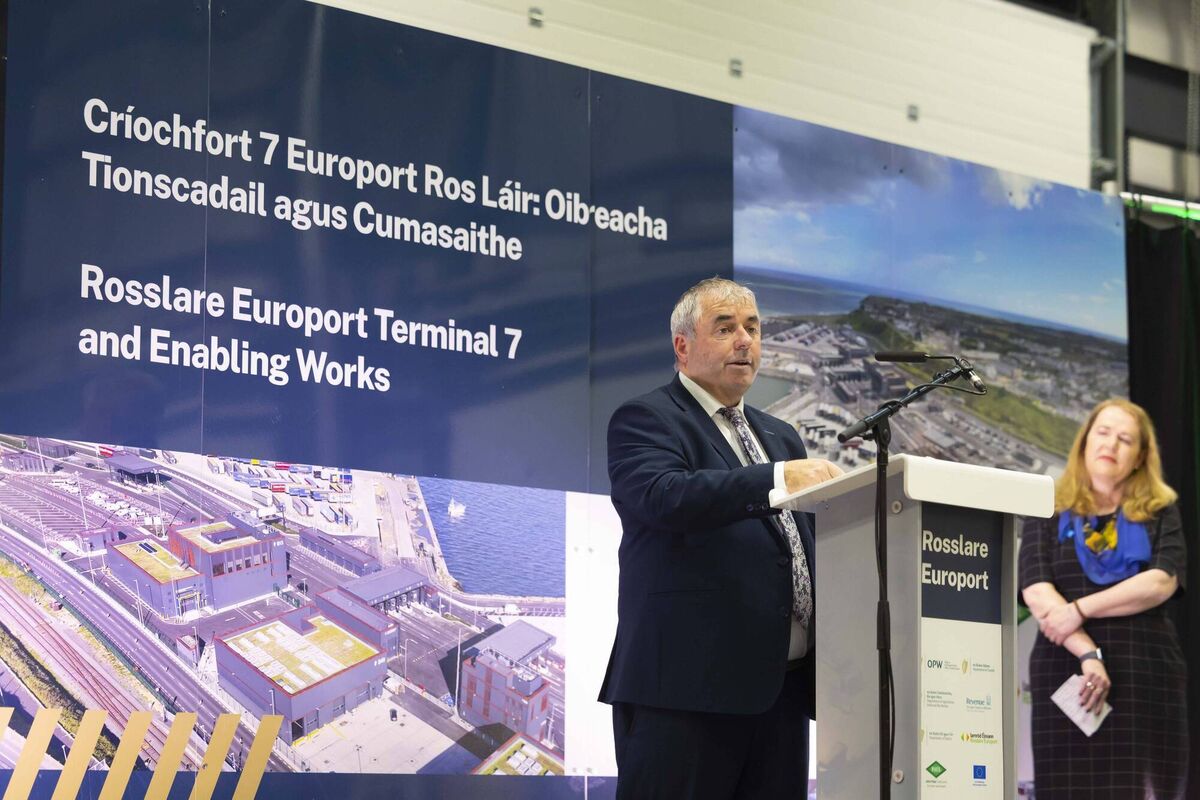
The OPW told the Irish Examiner the improved facilities will “enhance driver welfare” and streamline access and exits for passenger and freight ferries.
The new permanent facilities will include checks on food products and compliance with sanitary and phytosanitary legislation and are designed to provide protection for the EU single market. In practice, this means ensuring biohazards do not enter the country through the port.
Another key part of improving facilities at Rosslare Europort will include drug detection and countering smuggling and the ‘shadow economy’. Last month alone, an estimated €25m in seizures were made at Rosslare over the course of just one week. A new high energy X-ray gantry system is now being deployed in Rosslare, used to scan containerised freight and vehicles at the port. The new truck scanner allows the Revenue officers to carry out checks on vehicles as they enter the country.
Indeed, finance minister Paschal Donohue told the Dáil in September that more than 200 staff were employed by Revenue in frontier management in the South-East region.
Overall, the T7 project at Rosslare sees the replacement of temporary infrastructure and processing facilities which have been in place since 2021.
The project brought together various stakeholders, including Revenue, the Department of Agriculture, Food, and the Marine, the Department of Health/HSE, the Department of Justice, gardaí, with facilities provided for by Iarnród Eireann.
The T7 Rosslare Europort project is part of a wider plan to try and establish the south-east as an offshore renewable hub. Port bosses believe this plan has the potential the potential to create up to 2,000 jobs in the south-east.
Between all of the various projects being undertaken in and around Rosslare Europort, the complete infrastructure investment could reach €350m.
Work is continuing on developing the road network with advancement of the TII N25 Rosslare Europort Access Road project, which is currently in phase 5, with tenders being compiled.
Back at the port, passenger and freight traffic to the continent continues to grow. In October, Brittany Ferries increased its sailing schedule at Rosslare to Cherbourg, with extra capacity and departures rising from five to seven each week. This followed Stena Line's decision to leave the service to France in September, choosing to focus on its Irish Sea routes (which include services from the UK to Rosslare). Brittany Ferries, which has a long-term presence in Cork, entered the Rosslare-Cherbourg service in 2021. In that time the company’s freight traffic doubled while passenger volumes increased by 40%.
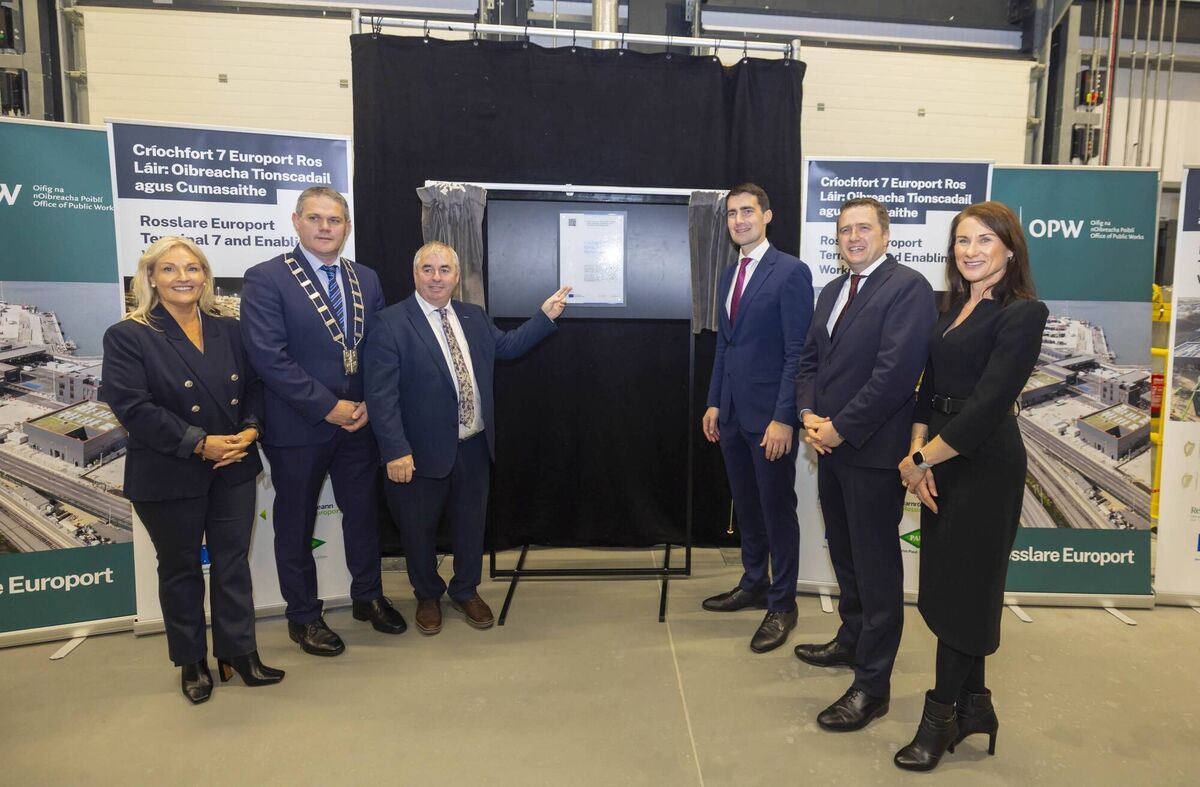
Glenn Carr, director of commercial business units for Iarnród Éireann Irish Rail-Port Authority for Rosslare Europort, said since Brexit, direct sailings between Rosslare Europort and the European continent increased six-fold.
Back in September, Danish shipping and ferry company DFDS announced it was increasing capacity on its Rosslare to Dunkirk service, bringing in the larger vessell the Victoria Seaways to service the route.
Roll on-roll off (Ro-Ro) traffic from Britain to Rosslare increased last year, as the port took up some of the slack caused by the closure of Holyhead in Wales, which hit services to Dublin. Rosslare also continued to see strong Ro-Ro traffic from the EU last year. Overall, Rosslare recorded 632,254 passengers in 2024.
While driving up traffic is part of the focus in Wexford, sustainability has becoming an increasing factor, as at other ports in Ireland. Rosslare has received funding in July from the EU’s Connecting Europe Facility for Transport (CEF Transport) fund for a project entitled ‘Green Drift’, to develop emission-reducing port infrastructure. This includes the ramps at Rosslare and onshore power supplies.
Iarnród Éireann/Rosslare Europort received €19.2m towards the Green Drift project in July. The funding will go towards extending and upgrading Berth 3 at Rosslare, which will also allow the port to accommodate larger vessels. The steel deck of the ramp will be replaced and a Hydro Electric upgrade will also be undertaken.
Berth 3 will also see the installation of on-shore power connections for vessels on the Dunkirk to Rosslare route.
